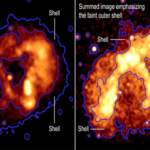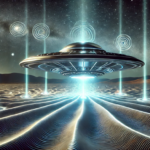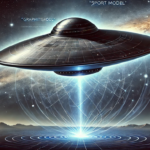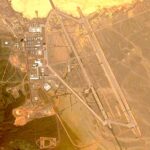Introduction to the Pious Effect and Unification Overview of the Pious Effect The term “Pious Effect” refers to a transformative movement within the realm of science and philosophy, inspired by the historical figure Louis the Pious and his vision of an empire unified under a singular idea. This concept extends beyond the historical context, symbolizing […]
Features
Taming Gravity features articles and posts supporting the idea that gravity can be tamed.
Watch a 180-year-old star eruption unfold in new time-lapse movie (video)
Astronomers have created a video using over two decades of data from NASA’s Chandra X-ray Observatory, revealing the expansion of a stellar eruption that occurred around 180 years ago. The eruption, known as Eta Carinae, involves a star system containing two massive stars. The explosion, referred to as the “Great Eruption,” is thought to have […]
Time Travel: Unraveling the Mysteries of Moving Through Time
Exploring the Science, Possibilities, and Challenges Behind Traversing Temporal Dimensions Introduction Time travel has fascinated humans for centuries. From mythological accounts of gods manipulating time to the modern portrayal of time machines in science fiction, the concept of moving through time has captivated our imagination. But beyond fiction, time travel holds a deeper allure—its […]
Exploring the Energies Behind Artificial Black Hole Propulsion and Faster-Than-Light Travel
Understanding the Theoretical Forces Needed to Create Artificial Black Holes to Travewl Beyond the Speed of Light Creating an artificial black hole capable of faster-than-light (FTL) travel is a concept that straddles the realms of theoretical physics and speculative science fiction. While current scientific understanding prohibits any object with mass from exceeding the speed […]
Decoding UFO Movements: The Role of Artificial Gravity in Unexplained Phenomena
How Advanced Gravity Manipulation Could Explain the Extraordinary Maneuvers and Behaviors of UFOs Artificial gravity, a concept tied to the manipulation of gravitational fields, provides a compelling framework to explain many of the extraordinary physical behaviors observed in UFO sightings. By understanding how advanced technologies could generate or manipulate gravity, we can hypothesize mechanisms […]
Artificial Intelligence and Gravity: Revolutionizing Interstellar Navigation
How AI and Gravity Manipulation Could Unlock the Secrets of UFO Propulsion and Faster-Than-Light Travel The idea of using artificial intelligence (AI) to navigate to the stars by triangulating artificial gravity, as allegedly described by Bob Lazar in his experiences at S4 near Area 51, is a fascinating intersection of advanced technology and speculative […]
A UFO Story Told to Me
Bob Jones work at Area 51 Underground Base I am starting this with a disclaimer here since it is secondhand information. I personally heard it from the person claiming this information to be true, that he experienced all that is said here in this post. But as second hand you will have to take […]
Leonard Stringfield: The Pioneer of Ufology Research
Leonard Stringfield: The Pioneer of UFO Crash Retrievals When the subject of UFOs (Unidentified Flying Objects) is broached, skepticism often follows. However, Leonard Stringfield, a pioneering figure in the field of ufology, took a disciplined approach, bringing credibility and academic rigor to a realm often regarded as speculative. His relentless search for truth redefined the […]
Michael Herrera a US Marine’s Testimony at the UAP Hearing
The Controversial Claims of Black Ops and Natural Disasters: A Deep Dive into Michael Herrera’s Allegations Unpacking the Complex Web of Allegations with a Structured Gaze In an era where information flows as swiftly as rumors, the allegations put forth by Michael Herrera touch upon controversial, sensitive, and complex themes. According to Herrera, the Military […]
Jacques Vallee: The Pioneering Polymath Behind Ufology, Computer Science, and Beyond
Charting the Intersections of Science and the Unknown: How Jacques Vallee’s Diverse Contributions Illuminate the Path for Pioneering Research Jacques Vallee, a computer scientist, venture capitalist, and ufologist, may not be the first name that comes to mind when discussing the conquest of gravity. However, Vallee’s unique blend of scientific rigor and open-minded inquiry into […]










